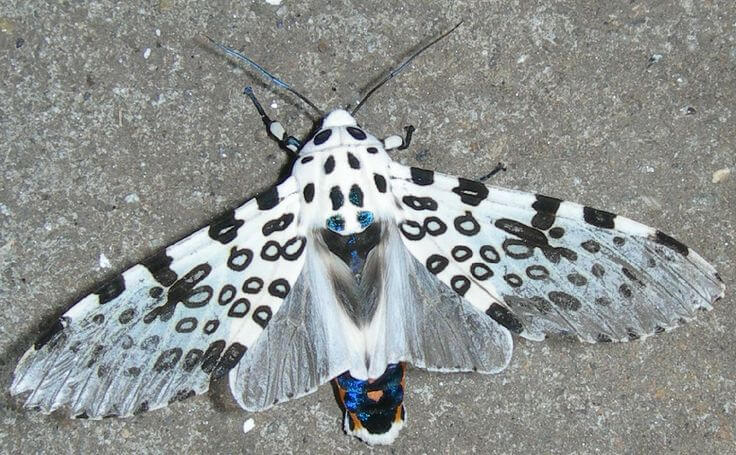Caterpillars are a wonderful insects. Aren’t they? A caterpillar turns into a cocoon and then into a beautiful butterfly or moth. The same goes for the black caterpillars.
If you see or read the black caterpillar identification chart, you’ll observe that several caterpillars of this breed exist in nature.
Later, they also turn into fascinating moths or butterflies, like a giant leopard moth. You must know that not every black caterpillar can turn into the same moth or butterfly as per the ecosystem.
In this blog, you’ll find out whether every black caterpillar can turn into a giant leopard moth or not. A giant leopard moth is a very popular insect for its large wings and leopard-like appearance.
What is Black Caterpillar?
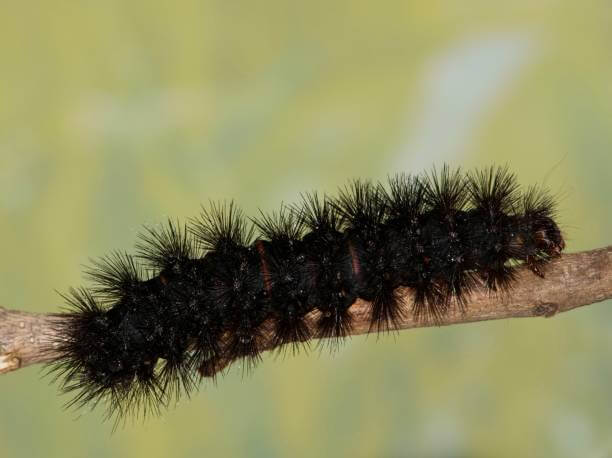
A black caterpillar is one of the most popular breeds of their species. They are generally covered with black spikes. They also have mild red, yellow, or orange stripes. They evolved into fascinating butterflies and moths. These types of caterpillars are of Lepidoptera origin.
Several caterpillars are recognized as black caterpillars; they are as follows:
- Giant Leopard Caterpillar
- Giant Tiger Caterpillar
- Wooly Bear Caterpillar
- Black Spiny Elm Caterpillar
- Peacock Caterpillar
- Garden tiger Caterpillar
- Sweet Gale Moth Caterpillar
- Red Admiral Caterpillar, etc.
They are sensitive and change their color like a chameleon during the winter. They can grow up to 3.5 to 14 cm.
What is a Giant Leopard Moth?
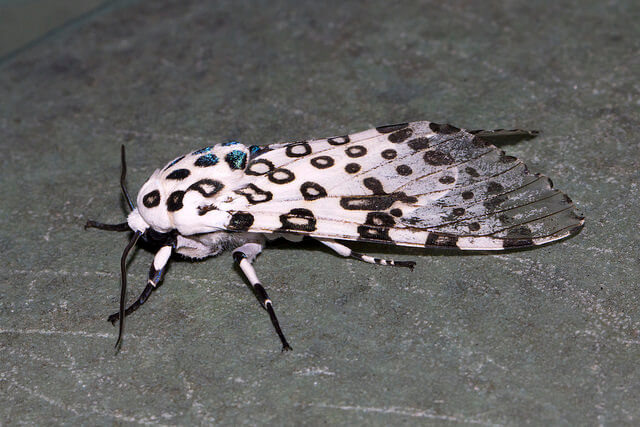
The giant leopard moth is an Erebidae moth that is an evolved form of a black caterpillar. A giant leopard caterpillar evolves into these types of moths after the pupal stage. These types of moths are very popular not only in the North American region but also in the African and European territories. They have large wings of 76 mm. The giant leopard moth’s wings are bright with a few black dots like a leopard. They are insects but belong to the Animalia kingdom, and their genus is Hypercompe. In the United States, you can observe them in local trees during the summer.
Does All Black Caterpillars Turn into a Giant Leopard Moth?
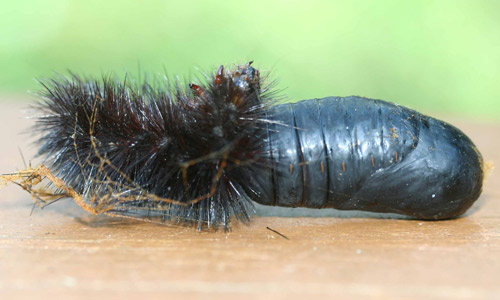
A caterpillar evolves into a cocoon. Then, a cocoon evolves into a butterfly or moth. Several black caterpillars exist in nature. However, It’s not possible for all the black caterpillars to turn into giant leopard moths. A wooly bear caterpillar turns into a monarch butterfly or moth, and a giant tiger caterpillar becomes a giant tiger butterfly.
Similarly, only a giant leopard caterpillar can become a giant leopard moth. There’s no reason it can, and it’s just a natural process. A giant leopard caterpillar derived from the egg of a female giant leopard moth. Then, it turns into a cocoon during the transition period. After that, it evolves into a giant leopard moth.
A giant leopard caterpillar is a black caterpillar belonging to the Lepidoptera group. It has black hair covering the entire spine. Their spikes are black with red stripes and orange sparse.
When they turned into giant leopard moths, they gained white and long wings. Their wings consist of black dots. As per the ecosystem, only a giant leopard caterpillar can become a giant leopard moth.
Meanwhile, the other black caterpillars can evolve into different types of moths or butterflies. Contrarily, a garden tiger caterpillar can become a tiger moth, but a giant leopard moth can’t.
How Do You Identify a Giant Leopard Caterpillar or Moth?
Giant Leopard Caterpillar
1. Black Spikes
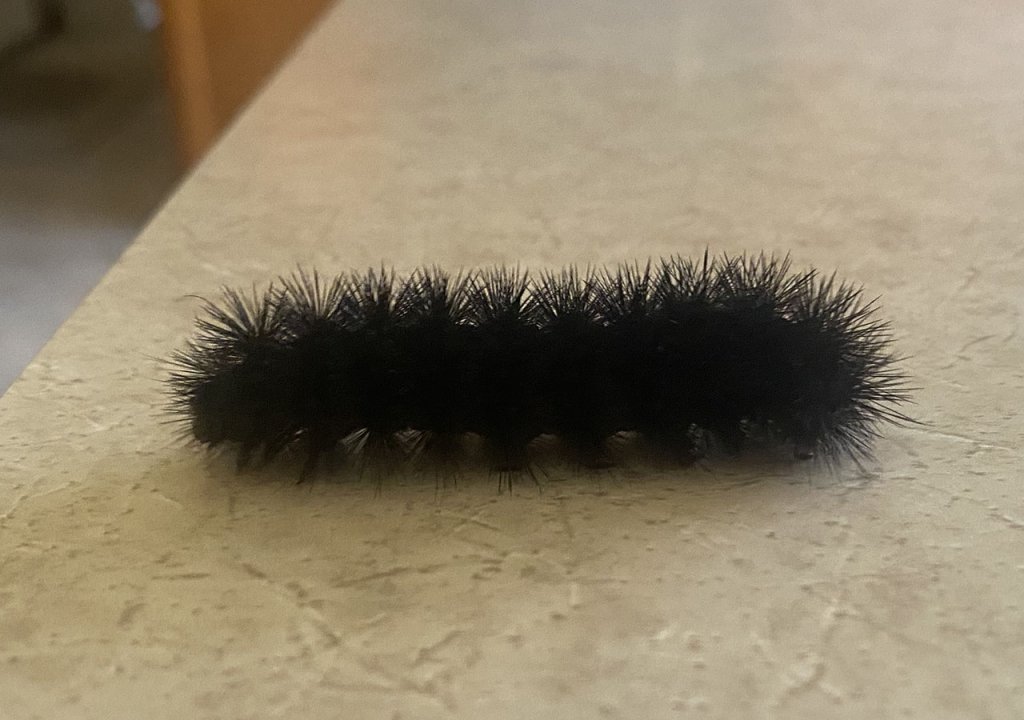
A giant leopard caterpillar is a part of the black caterpillar and Lepidoptera group. Thus, generally, they have black spikes like other caterpillars of this category. Their hair is fuzzy and black. In addition, their spine is entirely covered with black hairy spikes. They love eating plants and vegetables like other caterpillars.
2. Red Stripes
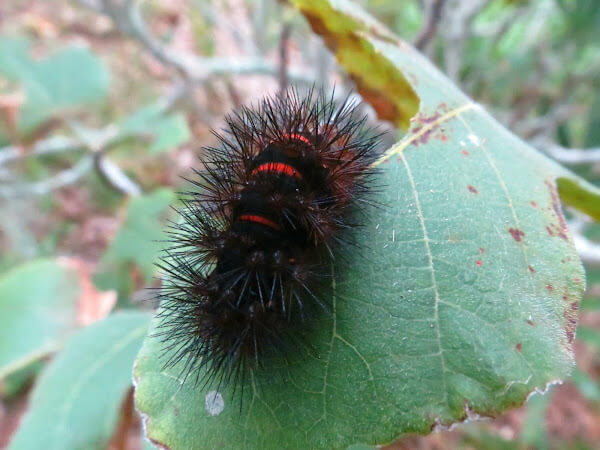
A special trait of a giant leopard moth is red stripes. All other black caterpillars also have stripes, but they aren’t red. For example, wooly bear caterpillars have orange stripes, and giant tiger caterpillars have yellow. Meanwhile, a giant leopard caterpillar’s stripes are red, which is a major identification sign.
3. Orange Sparse

During the winter, all caterpillars either turn into cocoons or hibernate themselves. The same applies to a giant leopard and other caterpillars. However, during the cold weather, the skin of a giant leopard caterpillar gains a mildly orange scar on its body. It helps them to cope with the coldness.
Giant Leopard Moth
1. Black Spots
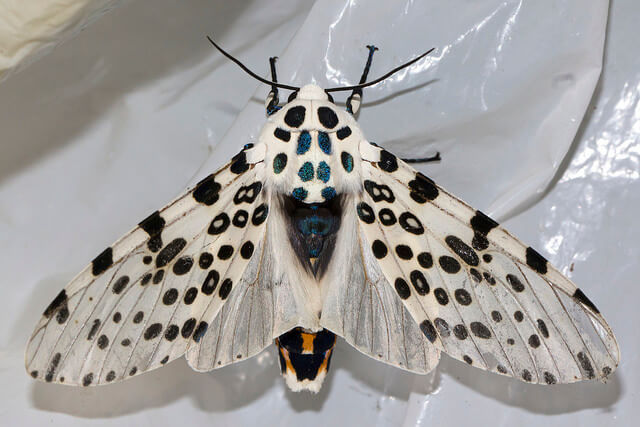
After the pupal stage, a giant leopard caterpillar becomes a moth. You can identify them by the black spots on their large wings. Their black dots are similar to the black dots of a leopard. This is another reason that people call them as the giant leopard moths.
2. Bright and Large Wings
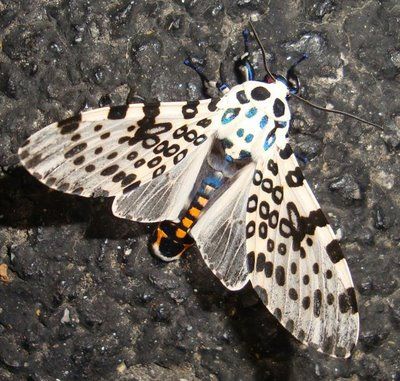
The important trait of the giant leopard moths is their large wings. They are large, and you can recognize them easily. They have the largest wings, up to 76 mm. No other moths of their breeds have this physical trait. Their wings are bright with a few black dots and blue markings.
In Summary
You can notice several black caterpillars in the narture. They all have black spikes and red, yellow, or orange stripes. However, not all of them can become giant leopard moths. It’s not possible scientifically, and the ecosystem won’t allow it.
Only a giant leopard caterpillar can turn into a giant leopard moth. It’s similar to how no other caterpillar can turn into a monarch butterfly or moth apart from a wooly bear caterpillar.
In this blog, you’ve learned whether the all-black caterpillars can turn into giant leopard moths or not. If you still have any queries, let us know in the comments.

